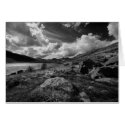
Many lead lines work on a subconscious level making them hard to compose in camera but with a bit of practice you will soon have the hang of it. The lines are used to guide the viewer into and around your image so you need to be careful that the lines in your image do not lead the viewer out of frame or too the edge of your image. Some lines will go from edge to edge in your image like the horizon but if you had railway lines going to the horizon this would give you a “T” of lead lines that would help to lead the viewer’s eye around the image. This would be more effective if the horizon was 1/3 from the top giving a tall “T” rather than 1/3 from the bottom giving a short “T”.

Having one major lead line in your image can give you a very strong composition but the use of multiple lines can also give you a strong composition without it being so obvious to your viewer, the trick is to make them work together and not compete with each other. Unseen lines as I like to call them is a persons line of sight, so if you have a person with a principal position in your image looking at something in or outside of the image then it will be human nature for people to follow the line of sight to see what they are looking at.

A lot of things can effect how well lead lines work not lest of which is the viewer, if they come from a culture where people read from left to right or from right to left will have an effect on how well the image may work for them. As with all rules for composition once you know them they are but tools for you to use or not to help you create your image and when you understand them feel free to break them.
Next time I will be looking at colour and how you can use it to bring feeling to your images.



No comments:
Post a Comment